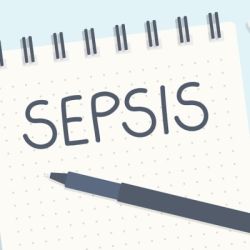Sepsis is characterised by dysregulated immune responses. Traditional approaches to treating sepsis by targeting proinflammatory and immunosuppressive responses have been largely unsuccessful. Recent efforts have shifted towards identifying subtypes of sepsis to enable personalised treatment. However, many important immunological concepts, such as resistance, disease tolerance, resilience, resolution, and repair, have been overlooked in current sepsis models.
A recent paper proposes a framework for defining dysregulated immune responses by relating fundamental immunological concepts like immune resistance, disease tolerance, resilience, and resolution to sepsis immunobiology.
In sepsis, dysregulated immune responses involve hyperinflammation and immunosuppression, which typically act in opposition but occur concurrently. Hyperinflammation results from uncontrolled pro-inflammatory mechanisms, causing collateral damage and contributing to sepsis pathogenesis. This unbalanced response also leads to immunosuppression, characterised by programmed cell death of lymphocytes, T cell exhaustion, and increased regulatory T cells and myeloid-derived suppressor cells. These maladaptive responses vary among patients and change over the course of sepsis, contributing to its heterogeneity. Despite over 200 clinical trials attempting to modulate these responses, none have yielded successful immunomodulatory treatments for sepsis. Challenges include patient selection, dosing, timing, and understanding how the host immune response evolves. Additionally, the interaction between immune and non-immune components of the dysregulated host response in sepsis remains poorly understood.
Inflammatory Mediated Inflammatory Diseases (IMIDs) encompass various conditions characterised by chronic inflammation, immunological dysregulation, and organ damage. Historically, treatment relied on broad immunosuppression with glucocorticoids and other agents, but recent advances have focused on targeting specific cytokines, such as tumour necrosis factor (TNF), with biologics. This targeted approach has led to improved response rates and reduced toxicity. Additionally, the success of cytokine inhibitors has highlighted the importance of molecular-based classifications. This precision medicine approach could be applicable to sepsis, given the similarities in cytokine profiles. Strict control of inflammation in IMIDs has been shown to prevent progressive organ damage, emphasising the importance of timing in interventions to restore homeostasis. Reframing sepsis immunobiology could draw from IMID experiences, focusing on cytokine networks rather than individual concentrations, to predict disease kinetics, immune state, comorbidities, and treatment response. Advanced technologies like multiplex assays and artificial intelligence offer new opportunities for biomarker discovery and network analysis, potentially guiding more effective sepsis treatments.
The immunobiology of sepsis can be reframed by considering six additional key concepts: immune resistance, disease tolerance, and resilience; different scales of microbial threat; compartmentalisation of immune dysregulations; resolution of inflammation; trained immunity; and subtypes of sepsis.
Immune resistance, disease tolerance, and resilience encompass strategies humans use to protect themselves from microbial threats and recover from infections. Current microbiological assessments in sepsis focus on pathogen identification and class, but understanding immune responses to different scales of microbial threat could reveal insights into sepsis heterogeneity and potential therapeutic targets.
Current therapeutic trials in sepsis often overlook the possibility of divergent immune responses within organs compared to blood, raising concerns about potential adverse effects from immunotherapy. Understanding the compartmentalisation of immune dysregulations may have treatment implications and warrants further investigation in future studies.
In sepsis, the problem in immunobiology may lie not in the initial resistance mechanisms but in their failure to deactivate once the microbial threat is eliminated. The biological mechanisms underlying the resolution of inflammation in sepsis are not fully understood, but they present new treatment opportunities.
Trained immunity involves metabolic and epigenetic reprogramming of innate immune cells induced by primary microbial threats, lasting for weeks or months. Understanding the role of trained immunity in the sepsis immune response is crucial.
The current subtyping of sepsis patients varies widely across studies in terms of design, input data, analysis types, and terminology used. Molecular subtypes of sepsis are derived from blood leukocyte gene-expression data using unsupervised clustering, resulting in classifications such as MARS endotypes and SRS subphenotypes. Clinical subtypes, on the other hand, are generated from routine clinical and biomarker data using similar clustering methods, leading to classifications like clusters, classes, or subphenotypes. The key concept emphasised is the identification of overlapping or common subtypes across different studies, indicating shared modifiable mechanisms that could serve as targets for immunomodulation.
The reframing of dysregulated host immune responses in sepsis emphasises altered homeostasis with pathological disruptions in immune-driven resistance, disease tolerance, resilience, and resolution mechanisms. This reframing offers new opportunities for discovering and refining sepsis treatments, with potential implications for other critical illnesses like ARDS.
A research roadmap is proposed to advance this understanding. It involves re-evaluating existing datasets to refine the proposed reframing, focusing on resistance, disease tolerance, and resolution pathways. This revaluation can use integrative or explanatory modelling across various data formats, including clinical and biological data.
In conclusion, the immunobiology of sepsis involves reframing dysregulated host immune responses as altered homeostasis, disrupting immune-driven resistance, disease tolerance, resilience, and resolution mechanisms. Sepsis subtypes are complex traits influenced by a patient's baseline health, inherited features, environmental factors, and immune responses. Successful immunomodulation in sepsis requires identifying modifiable immunological traits, deterministic biological networks, or molecular features.
Source: The Lancet
Image Credit: iStock

















